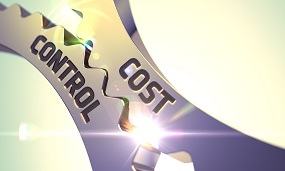 Managing a fleet of vehicles can be a cash-flow black hole, with a cascading set of challenges as the fleet gets larger and older.
Managing a fleet of vehicles can be a cash-flow black hole, with a cascading set of challenges as the fleet gets larger and older.
Efficiency can suffer as a company grows, and basic tasks start to take longer. Navigating the relationships between HR, payroll, and inventory come with their own sets of time-sinks, not to mention the challenges posed by keeping track of drivers and the state of their vehicles on the road.
The Big One: Saving on Fuel
Improving fuel efficiency is, of course, a great way to save. But the front-loaded costs associated with it can be crippling. For many companies, integrating new vehicles with better technology into the fleet is on a wish list rather than a schedule. Better aerodynamics and more efficient engines certainly do wonders for the bottom line, but let’s look at a more universal, short-term solution.
There are discount fuel programs available across the U.S and Canada, which can be an immediate relief on your expenses. However, as we’re going to discuss below, data integration is going to be your best friend when it comes to cutting down costs and time. Before you select a fuel discount program, you should make sure that, along with significant savings, you get:
- No transaction fees
- Comprehensive data analytics
- Plain language, well-presented data reporting
You’ll also want to check out what sort of control you get over each particular program. Keeping track of your expenses, and controlling the card limits are essential tools for managing driver activity.
GPS Telematics Reduce Payroll Expenses and Risk
Fuel discounts are a simple way to save a little up-front overhead, but for more significant improvements in efficiency we need to look at more complex solutions. The first step is to start tracking your vehicles in real time. The advantages to vehicle telematics are far-reaching, so let’s go through a few of the big ones step-by-step.
- Reduce payroll expenses
Especially for small employers that don’t have dedicated managers behind time tracking and payroll, timecard padding and fraud can be an insidious unnecessary expense. Even minor increments of a few minutes at a time can hurt. The first big advantage to GPS telematics is ensuring that drivers are reporting hours accurately. Even if you trust your crew, mistakes happen and it’s useful to have a double check.
- Combat rising insurance rates
A comprehensive telematics service will keep track of driving habits and clue you in to unsafe behavior. Swift correction of poor driving not only reduces the risk of accidents on the road but helps you develop a set of training priorities based on problem areas.
Of course, less risk, less loss, better premiums. If you can demonstrate to your insurance company that you value and train for safety by keeping your claims few and far between, you may be able to protect yourself from rising insurance rates.
That’s a lot of data, so how do we manage it effectively?
Consider Integrating HR and Payroll Systems
At this point, you’ll have data flying at you from all directions. Keeping it organized yourself is going to get overwhelming. To take full advantage of all of this data, you’re going to want to make sure you’re investing in the technology or outsourced service that can crunch all those numbers and provide you with actionable takeaways. Taking good action means being well-informed, and keeping all the data about your drivers in one place is going to do wonders for workflow.
While you’re at it, you may want to consider switching to an insurance provider that is going to understand the critical role all this investment is going to play in making your company safer.
Finally, don’t forget your insurance programs. Becoming a moving insurance affiliate can create a lucrative added income revenue stream while increasing customer satisfaction. Full Value Protection Insurance is another highly desirable option.
